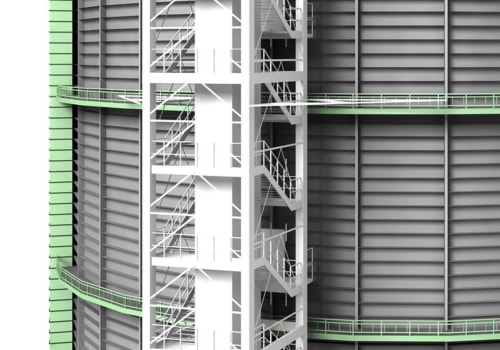Website silo architecture is a strategic way of organizing website content to improve search engine optimization (SEO), enhance user experience, and create a logical structure for both visitors and search engine crawlers. This approach groups related content into distinct categories, or "silos," which function like well-organized filing systems. By implementing a silo structure, websites can achieve better search visibility, higher engagement, and more streamlined navigation. This method is particularly beneficial for large websites with multiple topics, as it helps search engines understand the relevance and hierarchy of different pages. The proper use of website silo architecture contributes to stronger internal linking, improved authority distribution, and more effective keyword targeting, making it a vital component of SEO strategy.
The Importance of Website Silo Architecture
Search engines prioritize websites that offer well-structured, easily navigable, and thematically relevant content. A silo architecture enhances this by categorizing related pages under a common topic, creating a more organized flow of information. Without a proper structure, websites can appear cluttered, making it difficult for search engines to determine which pages hold the most importance. This lack of organization can lead to lower rankings, as search engines rely on clear content hierarchies to deliver accurate search results. A well-implemented silo structure ensures that search engines can efficiently crawl and index content, resulting in better keyword rankings and overall site authority.
Types of Website Silo Architecture
Website silos can be categorized into two main types: physical silos and virtual silos. Physical silos involve structuring content within a website’s directory system, organizing pages into folders based on related topics. For example, an e-commerce website selling electronics might have separate silos for smartphones, laptops, and accessories, each with its own dedicated subcategories. Virtual silos, on the other hand, are established through internal linking rather than physical directories. These silos connect related pages using contextual links, ensuring that search engines and users can easily navigate between them. Both physical and virtual silos contribute to improved site organization, and many websites use a combination of both to maximize efficiency.
How Silo Architecture Improves SEO
One of the primary benefits of website silo architecture is its ability to enhance SEO performance. By grouping related content together, websites can create keyword-rich topic clusters, making it easier for search engines to associate relevant keywords with specific pages. This increases the likelihood of ranking higher for targeted search queries. Additionally, silos improve internal linking by directing link equity to high-priority pages. This helps distribute authority more effectively, ensuring that essential pages receive the visibility they deserve. Websites using a silo structure also experience lower bounce rates, as visitors are more likely to explore related content when navigation is intuitive and logical.
Enhancing User Experience with Silos
A well-structured website not only benefits search engines but also enhances user experience. When content is organized into clear categories, visitors can quickly find the information they need without unnecessary confusion. Logical navigation paths encourage users to stay on the site longer, increasing engagement and reducing frustration. This is particularly important for businesses that rely on content marketing, as well-organized silos allow visitors to seamlessly transition between articles, product pages, and related resources. By providing a structured browsing experience, websites can improve user satisfaction and encourage repeat visits.
Implementing Website Silo Architecture
To implement a successful silo structure, website owners must first conduct thorough keyword research and define core topics. Each silo should focus on a specific theme, with supporting content reinforcing the main subject. Pages within each silo should interlink naturally, guiding users from general information to more detailed subtopics. Proper URL structuring also plays a role in reinforcing silos, as clear and descriptive URLs help search engines understand the hierarchy of content. Additionally, navigation menus, breadcrumbs, and internal linking strategies should align with the silo structure to maintain consistency throughout the site.
Common Mistakes to Avoid in Silo Architecture
While website silo architecture offers numerous benefits, improper implementation can lead to ineffective results. One common mistake is creating too many silos, which can dilute authority and make navigation overly complex. Another issue arises when internal linking between silos is inconsistent or non-existent, preventing users and search engines from effectively connecting related content. Websites should also avoid keyword cannibalization, where multiple pages within a silo compete for the same keywords, leading to ranking conflicts. A well-executed silo strategy balances structure with flexibility, allowing content to remain organized without becoming overly rigid.
The Role of Silo Architecture in Modern SEO Strategies
As search engines continue to prioritize well-structured content, silo architecture remains an essential SEO strategy. Websites that utilize this approach effectively can achieve better rankings, improved indexing, and stronger user engagement. Additionally, as Google emphasizes topical authority, organizing content into silos allows websites to establish themselves as authoritative sources within their respective industries. This is particularly important for niche markets, where well-structured silos can significantly impact search visibility. For example, businesses focusing on specialized topics, such as cybersecurity, can benefit from creating dedicated silos that address various aspects of online security, including articles, tools, and recommendations such as https://agrtech.com.au/security/best-vpns-canada/ to provide valuable insights for users seeking VPN solutions in Canada.
The Long-Term Benefits of a Silo Approach
Implementing website silo architecture requires careful planning and execution, but the long-term benefits far outweigh the initial effort. Improved search rankings, increased organic traffic, and enhanced user experience contribute to a website’s overall success. By organizing content logically, websites can ensure that both search engines and users can easily access valuable information, leading to higher engagement and improved conversions. As digital landscapes continue to evolve, businesses and content creators who embrace silo architecture will remain ahead in search visibility and online authority, making it a critical strategy for long-term growth.






